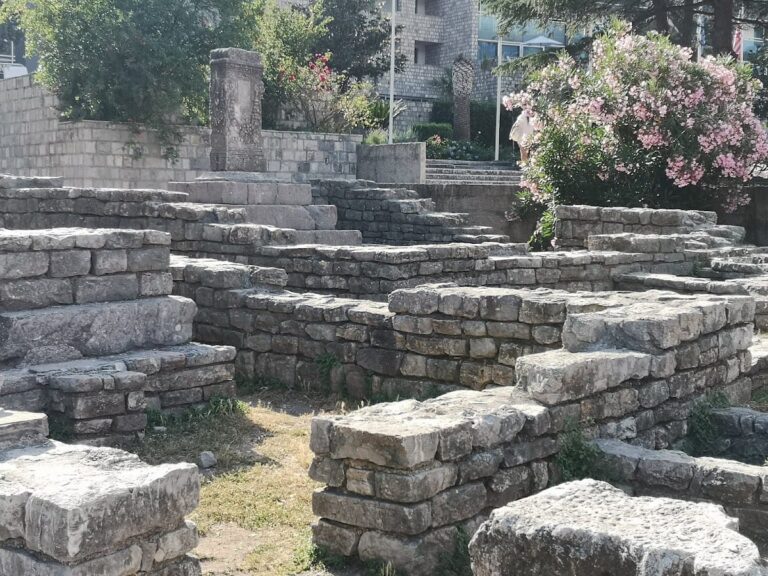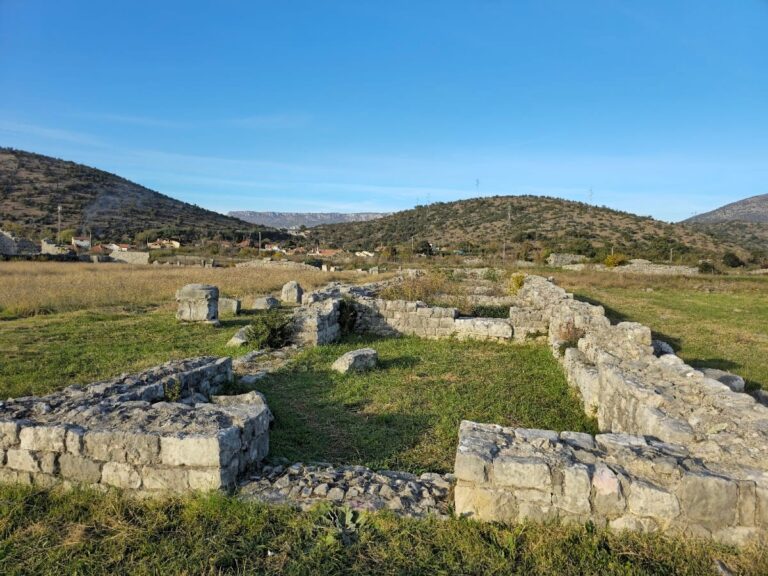Risan: Roman Mosaics and Villa in Ancient Rhisinium
Visitor Information
Google Rating: 4
Popularity: Low
Google Maps: View on Google Maps
Official Website: muzejikotor.me
Country: Montenegro
Civilization: Roman
Remains: Domestic
History
The Roman mosaics site in Risan is located in the ancient settlement known as Rhisinium, or Rizon in Latin. This town was a fortified settlement whose residents held Roman citizenship, a status known as “oppidum civium romanorum.” The city enjoyed special privileges, including tax exemption and freedom granted during the reign of the Illyrian king Gentius, indicating its importance before and during Roman control.
Risan flourished primarily in the 2nd century AD, a time when the Roman Empire was at its height. The settlement’s growth and wealth are evident in the establishment of a villa urbana, a type of elegant city villa typical of Roman provincial architecture along the Adriatic coast.
The villa and its mosaics were first uncovered in 1930 by Dušan Vuksan, who suggested that the ancient city extended beyond the river Spila to the cape Rtac. This hypothesis implied the presence of additional monumental structures in the area. Excavations began near the old Risan-Grahovo road but were halted by World War II. In 1942, Italian archaeologist Dr. Valenti conducted further digs but reburied the mosaics without protection, causing damage. Systematic archaeological work resumed between 1956 and 1960, leading to the preservation and study of the villa and its mosaics.
Remains
The archaeological site covers about 790 square meters and features a rectangular villa with a carefully planned layout. The villa consists of interconnected rectangular rooms arranged symmetrically around a central rectangular space. This central area is surrounded by a corridor, with rooms opening off it, demonstrating a deliberate architectural design.
The most famous mosaic depicts Hypnos, the Greco-Roman god of sleep, shown as a half-naked young man reclining with folded wings behind his shoulders. This mosaic rests on a small white tessellated base decorated with geometric shapes such as circles, rhombuses, and triangles arranged symmetrically. A central medallion is bordered by black tesserae and surrounded by stylized floral patterns in white, green, blue, red, and black.
Other mosaics in the villa do not include human figures but instead feature geometric and floral designs, emphasizing ornamental decoration. These mosaics and the villa’s architectural remains represent a fine example of Roman provincial art and building style on the Adriatic coast.
The mosaics and villa remain largely preserved in situ, although earlier excavations caused some damage. The site provides valuable insight into Roman provincial life and artistic expression in this region during the 2nd century AD.







